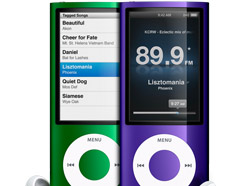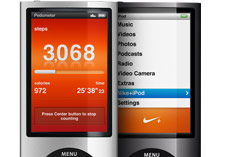 AP – An abandoned vehicle is shown shortly after a tsunami warning was issued in American Samoa on Tuesday, …
AP – An abandoned vehicle is shown shortly after a tsunami warning was issued in American Samoa on Tuesday, …APIA, Samoa – A powerful earthquake in the South Pacific hurled massive tsunami waves at the shores of Samoa and American Samoa, flattening villages and sweeping cars and people out to sea, leaving at least 82 dead and dozens missing.
Survivors fled the fast-churning water for higher ground and remained huddled there hours after the quake struck early Tuesday. Signs of devastation were everywhere, with a giant boat washed ashore lying on the edge of a highway and floodwaters swallowing up cars and homes.
The quake, with a magnitude between 8.0 and 8.3, struck around dawn about 125 miles (200 kilometers) from Samoa, an island nation of 180,000 people located about halfway between New Zealand and Hawaii. It struck about 120 miles (190 kilometers) from neighboring American Samoa, a U.S. territory that is home to 65,000 people.
Four tsunami waves 15 to 20 feet (4 to 6 meters) high roared ashore on American Samoa, reaching up to a mile (1.6 kilometers) inland, Mike Reynolds, superintendent of the National Park of American Samoa, was quoted as saying by a parks service spokeswoman. He reported dozens of park workers missing.
Hampered by power and communications outages, officials struggled to determine damage and casualties.
Samoan police commissioner Lilo Maiava told The Associated Press that police there had confirmed 63 deaths but that officials were still searching the devastated areas, so the number of deaths might rise soon.
Hundreds of injured were being treated by health workers and that people are still struggling into centers seeking treatment, Maiava said.
At least 19 people were killed on American Samoa, officials there said.
"I don't think anybody is going to be spared in this disaster," said American Samoa Gov. Togiola Tulafono, who was in Hawaii for a conference.
In Washington, President Barack Obama declared a disaster for American Samoa. The Federal Emergency Management Agency said it was deploying teams to provide support and assess damage.
Samoan Prime Minister Tuilaepa Sailele Malielegaoi looked shaken Wednesday on board a flight from Auckland, New Zealand, to the Samoan capital of Apia.
"So much has gone. So many people are gone," he told reporters on board. "I'm so shocked, so saddened by all the loss."
Malielegaoi said his own village of Lepa was destroyed.
"Thankfully, the alarm sounded on the radio and gave people time to climb to higher ground," he said. "But not everyone escaped."
Gov. Tulafono told reporters in Honolulu that more victims could be found when rescuers reach areas that are inaccessible by roads. Tulafono said a member of his extended family was among the dead.
There were unconfirmed reports of at least five additional people dead in the island nation of Tonga, west of the Samoas, New Zealand's acting Prime Minister Bill English said.
"There are a considerable number of people who've been swept out to sea and are unaccounted for," English said. "We don't have information about the full impact and we do have some real concern that over the next 12 hours the picture could look worse rather than better."
He said a New Zealand P3 Orion maritime surveillance plane would reach the region later Wednesday to search for survivors. U.S. Coast Guard spokesman Lt. John Titchen said a C-130 was being dispatched Wednesday to deliver aid to American Somoa, assess damage and take the governor back home.
On Samoa, New Zealander Graeme Ansell said the beach village of Sau Sau Beach Fale was leveled.
"It was very quick. The whole village has been wiped out," Ansell told New Zealand's National Radio from a hill near Samoa's capital, Apia. "There's not a building standing. We've all clambered up hills, and one of our party has a broken leg. There will be people in a great lot of need 'round here."
Australia's Department of Foreign Affairs and Trade said an Australian woman has been confirmed killed in Samoa, three other Australians have been hospitalized and six other Australians remain unaccounted for after the tsunami.
Mase Akapo, a meteorologist for the National Weather Service in American Samoa, reported at least 19 people killed in four different villages on the main island of Tutuila. Officials reported at least 50 injured.
American Samoa is home to a U.S. national park that appeared to be especially hard-hit.
Reynolds, the park superintendent, said he had been able to locate only 20 percent of the park's 40 to 50 employees and volunteers. He spoke to park service officials from Pago Pago Harbor and reported that the visitor center and offices were destroyed, according to Holly Bundock, a spokeswoman for the National Park Service.
Residents in both Samoa and American Samoa reported being shaken awake by the quake early Tuesday, which lasted two to three minutes and was centered about 20 miles (32 kilometers) below the ocean floor. It was followed by at least three large aftershocks of at least 5.6 magnitude.
The quake came Tuesday morning for the Samoas, which lie just east of the international dateline. For Asia-Pacific countries on the other side of the line, it was already Wednesday.
The Samoan capital was virtually deserted with schools and businesses closed. Hours after the waves struck, fresh sirens rang out with another tsunami alert and panicked residents headed for higher ground again, although there was no indication of a new quake.
Eni Faleomavaega, who represents American Samoa as a non-voting delegate in the U.S. House, said he had talked to people by telephone who said that Pago Pago — just a few feet above sea level — was flattened and several hundred people's homes were destroyed.
The dominant industry in American Samoa — tuna canneries — was also affected. Chicken of the Sea's tuna packing plant in American Samoa was forced to close although the facility wasn't damaged, the San Diego-based company said.
The effects of the tsunami could be felt thousands of miles away.
Japan's Meteorological Agency said "very weak" tsunami waves were registered off the island of Hachijojima about 10 hours after the quake. There were no reports of injuries or damage in Japan, which is about 4,700 miles (7,600 kilometers) northwest of Samoa.
U.S. officials said strong currents and dangerous waves were forecast from California to Washington state. No major flooding was expected, however.
In Los Angeles, lifeguards said they will clear beaches at about 8 p.m. in response to an advisory for possible dangerous currents.
While the earthquake and tsunami were big, they were not on the same scale of the 2004 Indian Ocean tsunami, said Brian Atwater of the U.S. Geological Survey in Seattle. That tsunami killed more than 230,000 in a dozen countries across Asia.
The 2004 quake was at least 10 times stronger than the measurements being reported for Tuesday's quake, Atwater said.
___
Sagapolutele reported from Pago Pago, American Samoa. Associated Press writers Ray Lilley in Wellington, New Zealand; Jaymes Song and Herbert A. Sample in Honolulu and Seth Borenstein and Michele Salcedo in Washington contributed to this report.



































